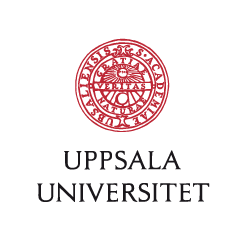 In phase 1 clinical studies of substances that might possibly be used to treat cancer in the future, cancer patients are recruited as research participants. These patients almost always have advanced cancer that no longer responds to the standard treatment.
In phase 1 clinical studies of substances that might possibly be used to treat cancer in the future, cancer patients are recruited as research participants. These patients almost always have advanced cancer that no longer responds to the standard treatment.
That research participation would affect the cancer is unlikely. The purpose of a phase 1 study is to determine safe dosage range and to investigate side effects and other safety issues. This will then enable proceeding to investigating the effectiveness of the substance on specific forms of cancer, but with other research participants.
Given that patients often seek online information on clinical trials, Tove Godskesen, Josepine Fernow and Stefan Eriksson wanted to investigate the quality of the information that currently is available on the internet about phase 1 clinical cancer trials in Sweden, Denmark and Norway.
The results they report in the European Journal of Cancer Care are quite alarming. The most serious problem, as I understand it, is that the information conceals risks of serious side effects, and in various ways suggests possible positive treatment outcomes. This lack of accurate language is serious. We are dealing with severely ill patients who easily entertain unrealistic hopes for new treatment options.
To give a picture of the problem, I would like to give a few examples of typical phrases that Godskesen, Fernow and Eriksson found in the information on the internet, as well as their suggestions for more adequate wordings. Noticing the contrast between the linguistic usages is instructive.
One problem is that the information speaks of treatment, even though it is about research participation. Instead of writing “If you are interested in the treatment,” you could write “If you want to participate in the research.” Rather than writing “Patients will be treated with X,” you could write “Participants will be given X.”
The substance being tested is sometimes described as a medicine or therapy. Instead, you can write “You will get a substance called X.”
Another problem is that research participation is described as an advantage and opportunity for the cancer patient. Instead of writing “An advantage of study participation is that…,” one could write “The study might lead to better cancer treatments for future patients.” Rather than writing “This treatment could be an opportunity for you,” which is extremely misleading in phase 1 clinical cancer trials, one could more accurately say, “You can participate in this study.”
The authors also tested the readability of the texts they found on the internet. The Danish website skaccd.org had the best readability scores, followed by the Norwegian site helsenorge.no. The Swedish website cancercenter.se got the worst readability scores. The information was very brief and deemed to require a PhD to be understandable.
It is, of course, intelligible that it is hard to speak intelligibly about such difficult things as cancer trials. Not only do the patients recruited as study participants hope for effective treatment. The whole point of the research is effective cancer treatment. This is the ultimate perspective of the research; the horizon towards which the gaze is turned.
The fact, however, is that this horizon is far removed, far away in the future, and is about other cancer patients than those who participate in phase 1 trials. Therefore, it is important not to let this perspective characterize information to patients in whom hope would be unrealistic.
Do not talk about treatments and opportunities. Just say “You can participate in this study.”
Godskesen, TE, Fernow J, Eriksson S. Quality of online information about phase I clinical cancer trials in Sweden, Denmark and Norway. Eur J Cancer Care. 2018;e12937. https://doi.org/10.1111/ecc.12937




Recent Comments